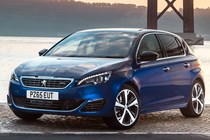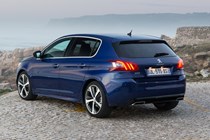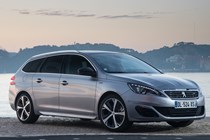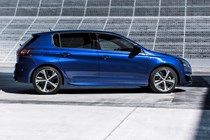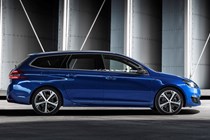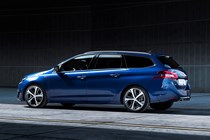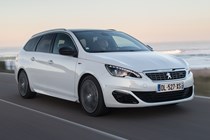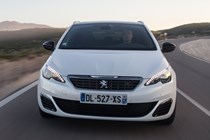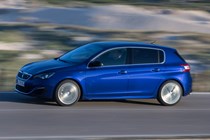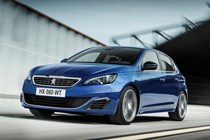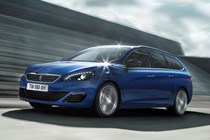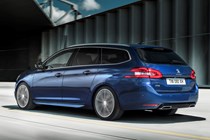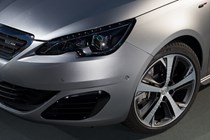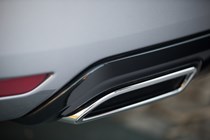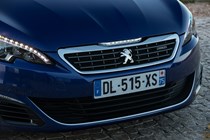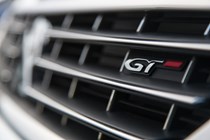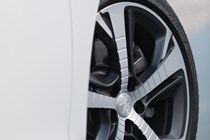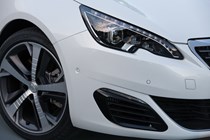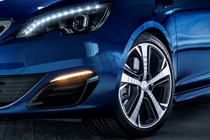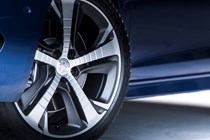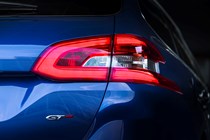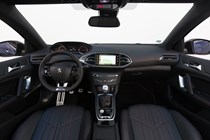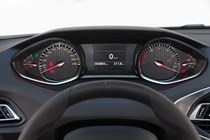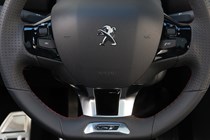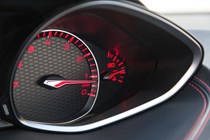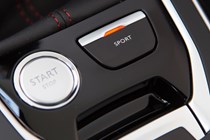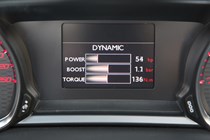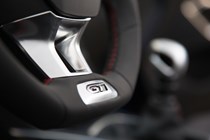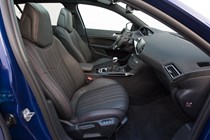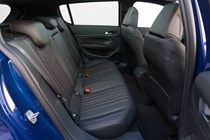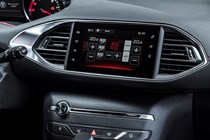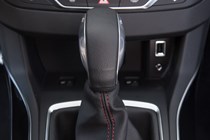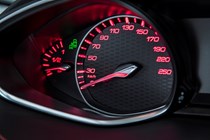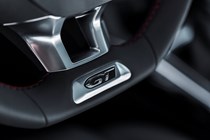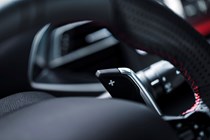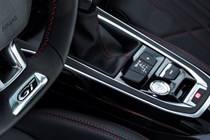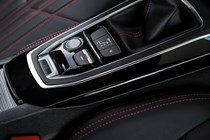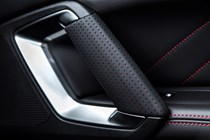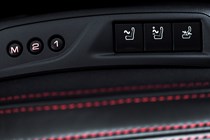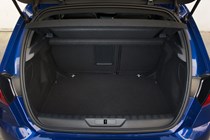
Peugeot 308 GT (2015-2017) engines, drive and performance
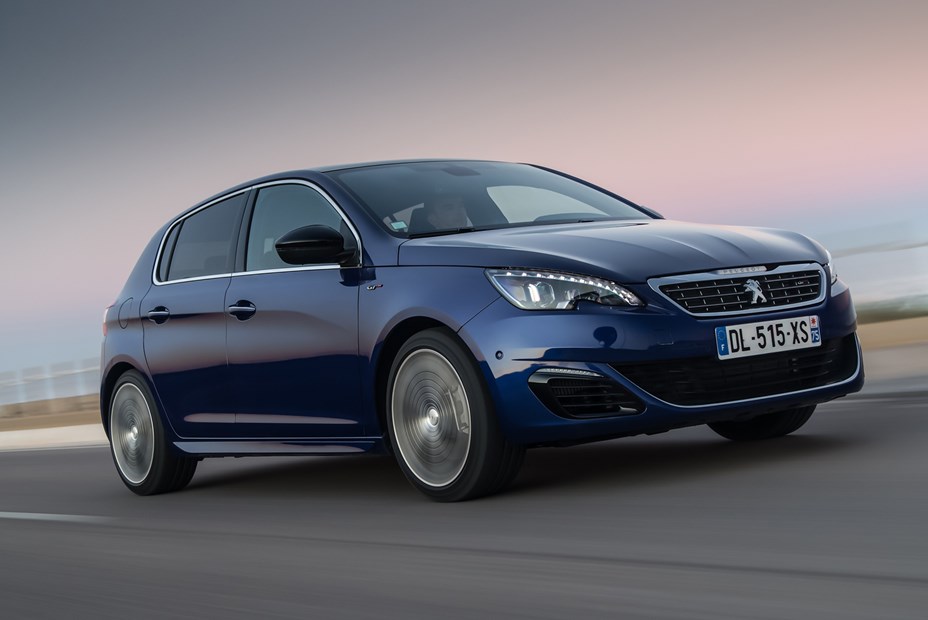
You’ve got a choice of two distinct drivetrains here, one focused on driving enjoyment and the other aiming at lower running costs. Either way, Peugeot 308 GT performance doesn’t match the hardest of hardcore hot hatches. It’s not meant to. Instead it’s more versatile, offering the sort of low running costs many car buyers expect but with a modicum of performance built in too.
Petrol power
Expected to make up the majority of sales, the petrol engine is a 1.6-litre turbocharged unit which develops 202bhp and torque of 285Nm delivered between 1,750 and 4,500rpm. That’s enough for a sprint from 0-62mph in 7.5 seconds and a top speed of 146mph flat-out, though you can only have this combination in the hatchback, not the estate.
We found driving the ‘THP’ petrol a pleasurable experience. It feels as fast as its performance figures suggest, responding quickly thanks to advanced turbocharging technology. It’s a smooth unit to drive too, and when driving normally it’s quiet enough to feel a quality product.
Its engine is coupled with a six-speed manual gearbox which is well-geared for good fuel economy but has a relatively long throw, which means it doesn’t feel particularly sporty. Thanks to the Sport button it can sound it, though: hold your finger on it for a short time and the engine note improves dramatically as well as the dash details turning red.
The only drawback here is that while the four-cylinder burble is pleasing on the ear, it sounds like it’s coming from somewhere other than the engine. In our right-hand drive test car on the international launch it sounded more like it was coming from the passenger-side door speaker or even outside the car, which serves to remind you that actually what you’re hearing is a cocktail of real engine noise bolstered by synthesized improvement. It’s partly fake, in other words.
From a performance perspective the Sport button also sharpens throttle response, but we didn’t notice more than a fractional improvement and we’re quite glad about that. Too much, and it’s difficult to drive at anything other than high speed.
But any drawback here is tempered with CO2 emissions of 130g/km and fuel economy of claimed 50.4mpg, we think you’ll agree this makes for impressive reading for a supposed performance model. Let’s see the thirsty Focus ST match that!
Diesel engine
For the lowest-possible running costs you’ll want the 2-litre diesel. This is only available with the firm’s six-speed automatic gearbox, but can be ordered in either estate or hatchback bodystyles.
Boasting slightly less power of 178bhp but a whopping 400Nm of torque at 2,000rpm, you can expect a hatchback to cover 0-62mph in 8.4 seconds and 8.6 seconds for the estate. Top speeds are 136mph and 135mph respectively.
Frankly, we’d avoid this engine and gearbox combination altogether if you’re looking for a performance drive. While its healthy torque figure means it feels relatively brisk in a straight line, the automatic can’t find the right gear to power out of the corner. You get a lot of the engine’s torque at once, which proves too much for the car to handle and it seems to jerk forward under acceleration.
The paddle-shifters are largely irrelevant too. The left-hand one especially was crammed in behind the steering wheel with the stalks for indicators and cruise control, which meant it was very easy to miss the paddle and hence the gear change. We marginally preferred using the gear lever in ‘sequential’ mode, but leaving it in automatic is just as effective.
When in Sport mode there’s an extra advantage with the automatic – the shift times drop from 0.31 seconds to 0.16. Can you feel the difference? Not really, but it’s a good pub fact.
And one final note: the synthesized engine noise in the diesel doesn’t sound as realistic as the petrol. It actually sounds more like an old-school American muscle car.
The 308 GT features suspension that has been lowered 7mm at the front and 10mm at the rear in an effort to make it a sportier drive than the regular 308. It’s also between 10 and 20 percent stiffer both front and rear, and the car sits on high-performance Michelin Pilot Sport 3 tyres.
Its brakes have been fettled too – the front discs are 330mm in diameter and the rears 268mm on the hatch or 290mm on the SW, so there’s more than enough stopping power on offer regardless of body style.
Great at low speeds
So that’s the news, but how does it translate on the road? During normal driving it’s good, turning in accurately and being easy to manoeuvre thanks to a relatively small turning circle. The tiny steering wheel helps here too – it makes the steering feel quicker than rivals’ and it feels more fun too.
For the most engaging handling you’ll have to pick the petrol. There are a few reasons for this, but the primary one is that it’s much lighter over the front end of the car, and not by a small amount: the diesel weighs the equivalent of one-and-a-half average human males more thanks to the far heavier automatic gearbox. Basically, it’s like having Rod and Emu sitting on the bonnet.
It means the diesel will tend to dive forwards into corners, while the petrol takes in more in its stride. You can feel the grip levels at the front more in the petrol car, despite its slightly lighter steering. It’s more agile as well, able to change direction with more fluidity.
Numb but accurate steering
The car’s front end doesn’t feel particularly communicative, which means you lack the confidence to drive this car like a sporty hatch should be driven. Its steering relays a mere whiff of what’s happening under the tyres, and hitting the Sport button does nothing to improve this – it just adds weight, meaning more force is required to turn the tiny steering wheel and thus accuracy is slightly improved.
Rivals handle better
It isn’t the final word in great handling, though. Drive at more than seven tenths and you’ll find a car that can tend to act a little unpredictably at the limits of grip. The rear end can become lose in faster cornering, so you’ll have to be alert. The reason this happens is down to the suppleness in the chassis, so given that it’ll be more comfortable than rivals on UK roads, it’s a sacrifice we can understand.
That said, while the firm’s engineers claim to have stiffened up both front and rear suspension, far more work is required to get this car towards the sort of handling ability the Octavia vRS, Ford Focus ST, SEAT Leon FR or even non-GTI VW Golf can manage.
Parkers picks…
In terms of handling, we can’t see why you’d buy the diesel version of this car. The far heavier front end means it washes wide far too easily, the extra weight over all four wheels means it’s less agile and the gearbox’s tendency to select a gear which delivers too much torque too soon on a corner’s exit means it’s frustrating to try to go quickly in this car. With that in mind, we’d advise anyone considering it to look at a regular 308 in the new GT Line trim. You get the looks and the kit, but it’s a least a grand cheaper and you can choose an engine with better running costs too.


